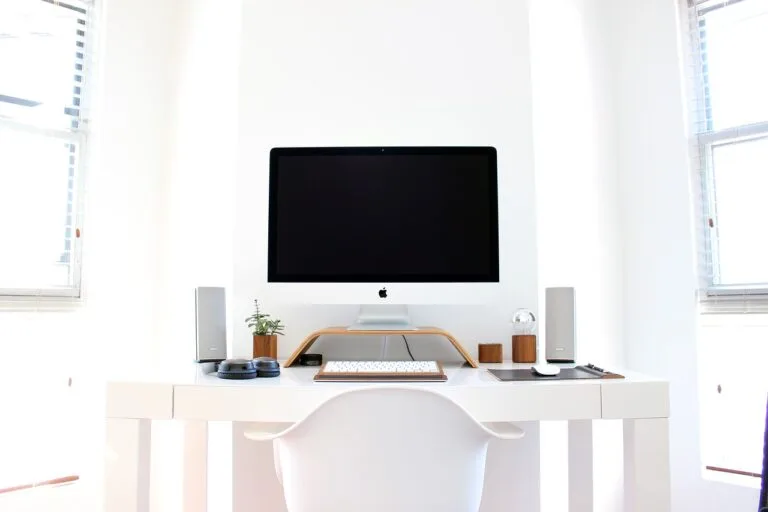Organizing Your Workspace as a Blind or Low Vision Individual
 Photo of a home office with view of desk and desktop monitor with accessories on the desk.
Photo of a home office with view of desk and desktop monitor with accessories on the desk.
Researchers at the University of Minnesota found working in a messy environment led to more creative thinking. But don’t be too quick to be content with clutter and disorder. Improving your organization as a person who is blind or low vision may be particularly advantageous. Sure, a relaxed environment is pleasant, but too relaxed of an environment and the workspace isn’t accessible.
An improved organizational system at work may be beneficial if:
- You regularly misplace items
- You often trip over or bump into objects which are out of place
- It takes a good deal of time to find an item, even though it’s in the correct drawer
- You spend more time than you want differentiating containers
- You find yourself frequently asking sighted colleagues to help you identify documents that should have been labeled and filed
If you realize you’d be wise to pursue more order in your workspace, utilize these organizational tips:
At Your Work Desk/ Station
- Resolve to push in your chair and close drawers and doors after use. You may need to ask an officemate to please do the same.
- Utilize drawer separators. Instead of placing an Optical Character Recognition (OCR) system in a heap of electronics within a drawer, its home can be in a specific section of a drawer separator.
- Designate a specific home for every work item, and store each item in its place every time. For instance, instead of placing stamps on the general location of the desktop, they can be stored in a particular container in your top desk drawer.
- Store frequently used items in the most accessible locations, such as a desktop organizer or the top drawer of a desk.
- Use color contrast if you have low vision; a dark-colored organizer will be seen best on a light-colored desktop.
- Don’t store easily-knocked-off items on the edge of your desk.
- Eliminate clutter.
General Office Space Organizational Solutions
- Ensure electrical cords are behind furniture or taped to the ground.
- Utilize baskets and bins on shelves as well as in cabinets and closets. Store like-items together.
- Use easily found storage containers such as craft supply containers or tackle boxes to arrange smaller items.
- Organize and label your belongings in any communal area, such as the kitchen, bathroom, or meeting room.
- Scan essential print documents to be stored virtually.
- Organize electronic files efficiently.
Labeling
- Utilize file folders with large-print or braille tabs to store papers.
- Label items that aren’t easy to identify.
- Label index cards with braille or large print and rubber band them onto cans or canisters. You can also purchase a braille labeler with adhesive tape.
- Label storage containers.
- Use tactile dots and markers to label controls, buttons, and switches that are not easily identified.
I hope you’ve read through the organizational strategies and found a few to adopt.
Perhaps you can also develop creative practices to feel more relaxed in your workspace without sacrificing the accessibility organization and order provide—think light music, a calming scent, or feeling the breeze through an open window. Organization and a peaceful environment may be the winning combination.
For more on organizing your time, calendar, and wardrobe, read 7 Ways to Get Organized as a Worker Who Is Blind or Visually Impaired